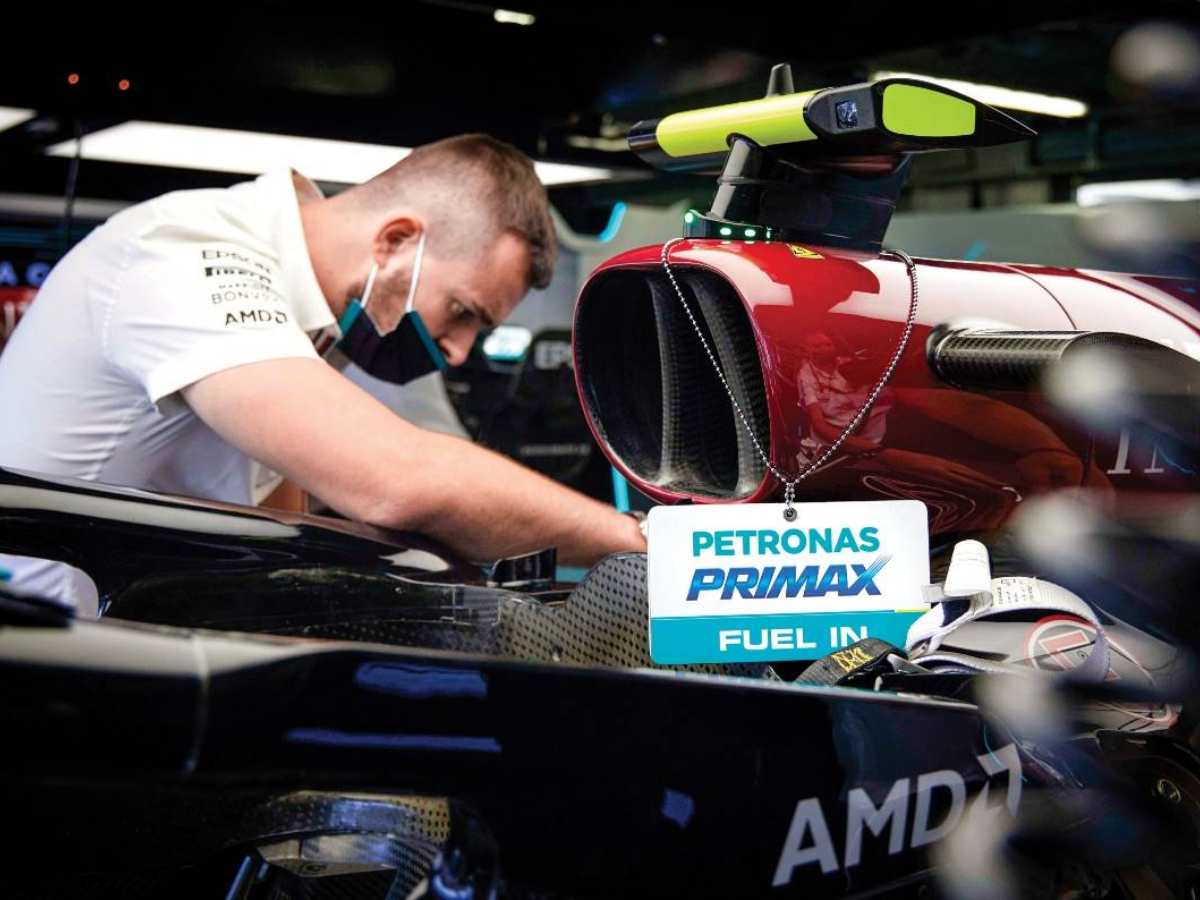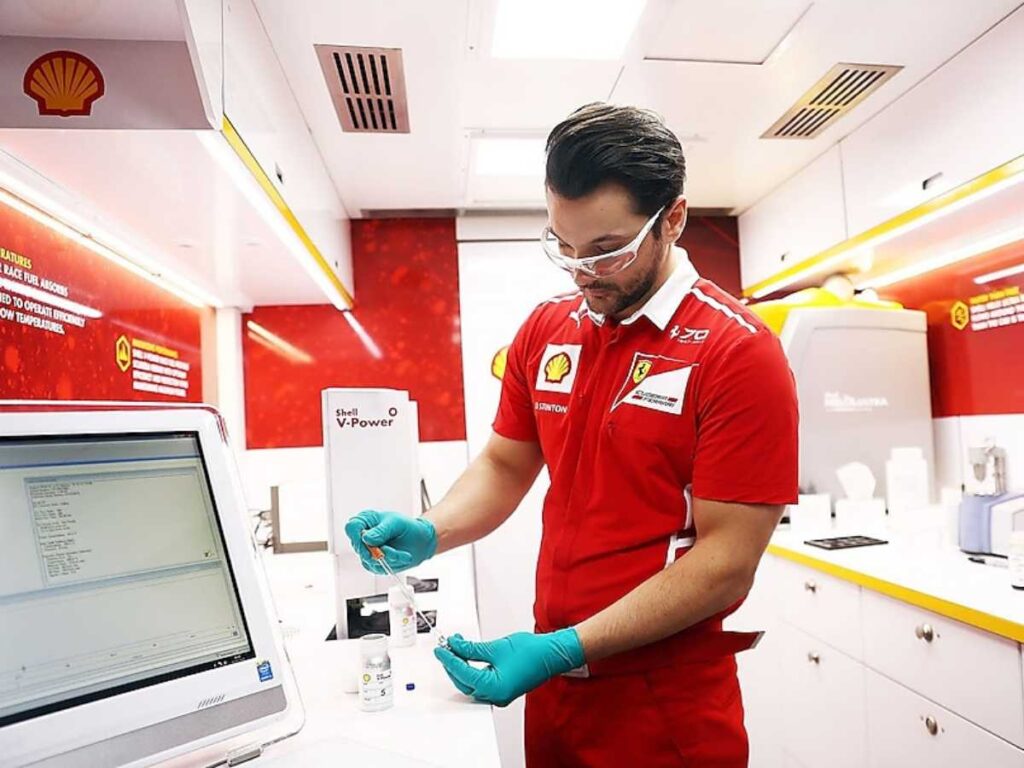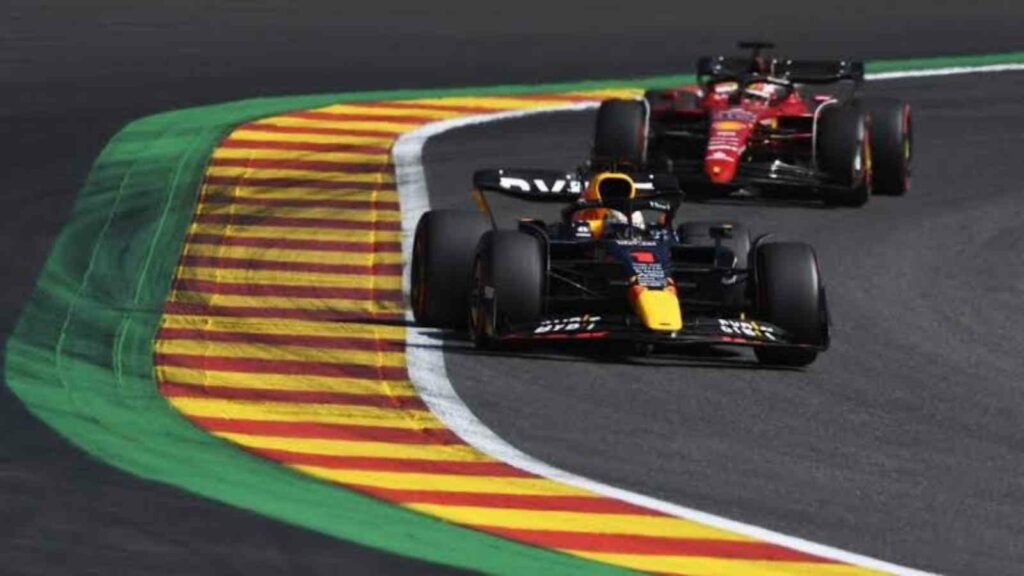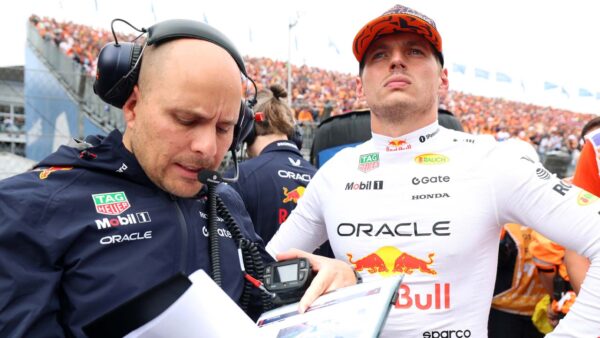How does fuel affect the performance of Formula One cars?
F1 fuel E10 is highly similar to regular petrol.

Formula One car being refueled
🔍 Explore this post with:
Formula One cars utilize an internal combustion engine to power themselves. Although ICEs on their own are not enough for a car to move under it’s own power. The engines require fuel, much like any other machine. Although fans often presume that the fuels used in Formula One cars must be extremely different from regular fuel used in road cars and highly optimized to better suit performance over efficiency.
This assumption is wildly inaccurate. According to Article 16 of F1 regulations, the fuel consumed by F1 cars has to be minimum 87 octane. This makes it surprisingly similar to petrol which also has an octane rating of 87. F1 fuels and petrol are said to be 99% similar. Additionally, Formula One has extremely strict guidelines preventing the addition of foreign performance enhancing compounds in their fuel.
F1 fuel is commonly referred to as ‘E10 Fuel’. It consists of 10% ethanol which aims at improving efficiency and sustainability. F1 plans to become completely carbon neutral in the near future. Owing to their environmental aspirations, Formula One plans to transition to a 100% sustainable alternate by the commencement of the 2026 season.
Related: “This is a branding thing,” Martin Brundle eliminates the prospective of Ford engines for Red Bull
How much fuel can a Formula 1 car carry?

Formula One cars are permitted to carry 110kgs of fuel per race. Race distances are usually 305km/190miles. The mileage a F1 car can derive from 1kg of fuel can widely vary depending on a number of factors. During the initial stages of the race, cars are heavier owing to their full tank of fuel. Therefore cars burn the most fuel during the first few laps and are least efficient during this stage. The cars proceed to become increasingly faster as they burn off fuel. This is due to the cars becoming exponentially lighter.
Teams are also required to produce 1kg of fuel from the car after the conclusion of a race. This practice is conducted in order to test the legality of the car’s fuel. Owing to this rule, Sebastian Vettel famously lost his podium finish in Hungary in 2021 after failing to produce a 1kg sample. A method by which drivers can save fuel is lifting and coasting. It is the practice of removing pressure from the throttle slightly earlier while braking into a corner. Although this causes an adverse effect on laptimes, it is an effective practice while defending.
Formula 1 engines can be turned down for less fuel consumption

Drivers can also alter the consumption rate of their car by switching engine modes. Certain engine modes are aimed at extracting the maximum performance while neglecting longevity and efficiency. Such modes are useful in gaining an advantage during a wheel-to-wheel battle. Similarly, engines can also be ‘turned down’ to become more efficient and conserve fuel. F1 cars are also not allowed to exceed a fuel flow rate of 100kg/hour. This refers to the amount of fuel transferred from the tanks to the engine over a specified period of time.
Formula One’s commitment to sustainability is highly commendable. Notably, F1 has made massive strides in decreasing their carbon footprint over recent seasons by implementing stringent fuel regulations. Although F1 has gathered quite the opposition to it’s 2023 calendar owing to it’s vastly negative environmental consequences, F1’s sustainability program is surely a step in the right direction.
In case you missed it:
- Lewis Hamilton feels that a F1 team ‘performs better’ when there is diversity
- Daniel Ricciardo spotted in his Red Bull overalls, for the first time in 2023







